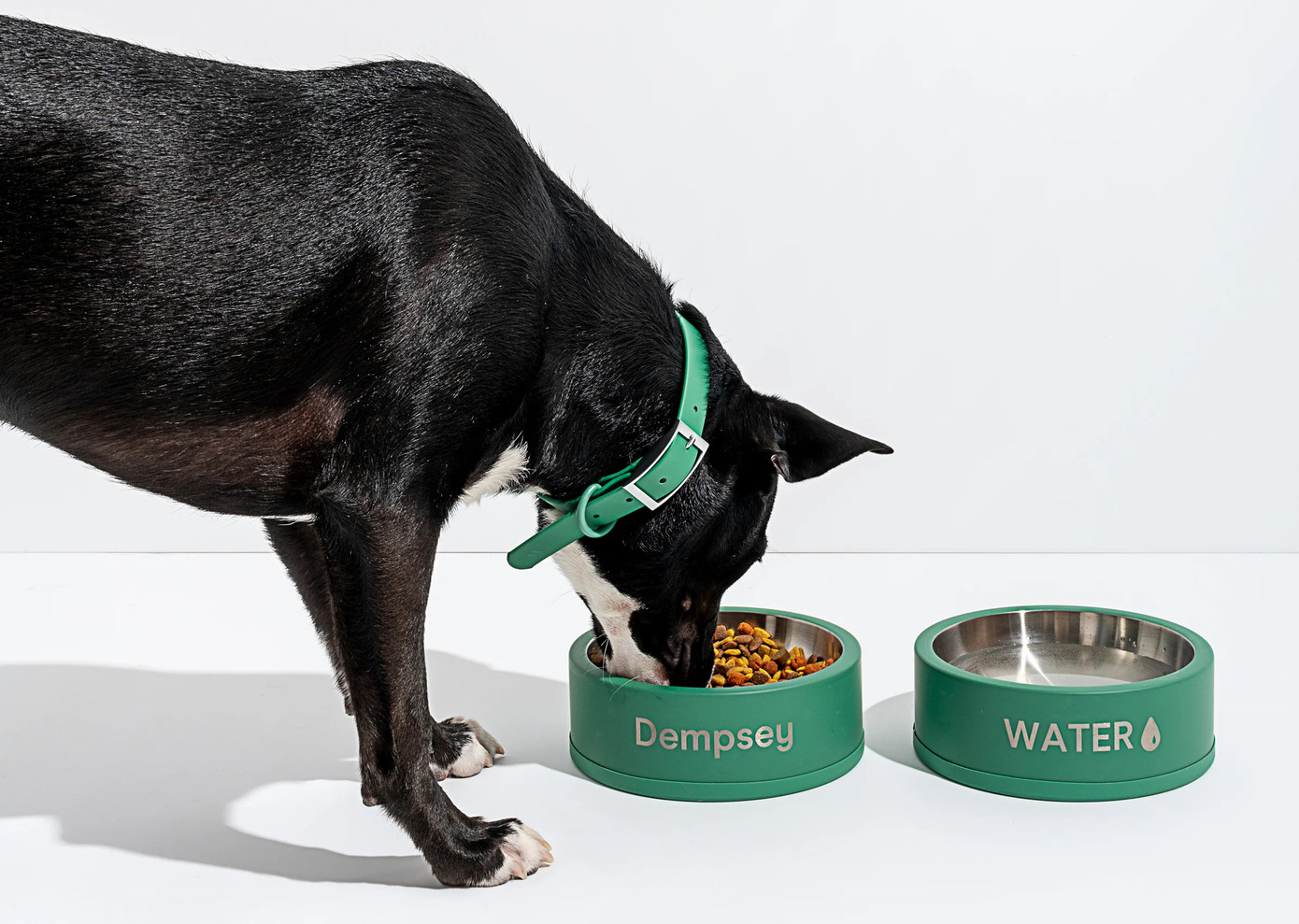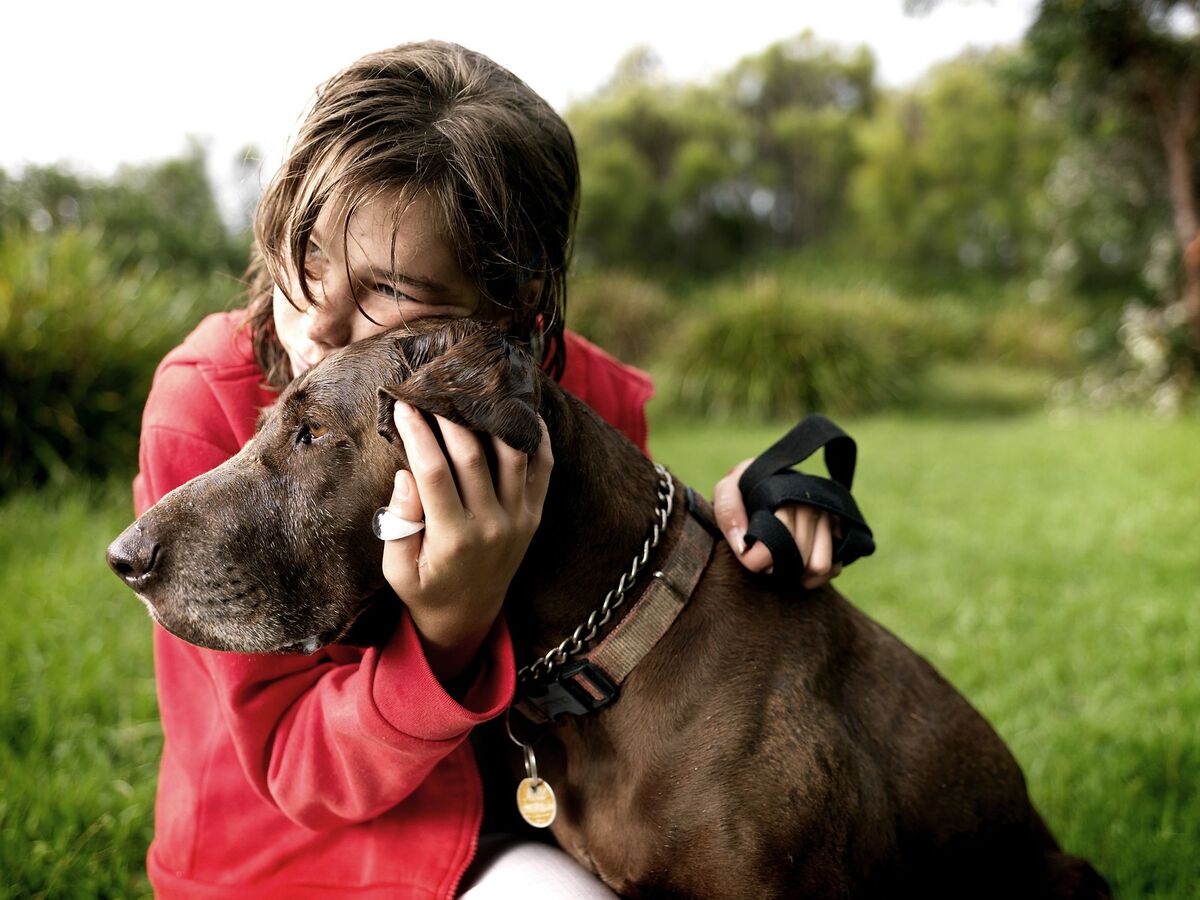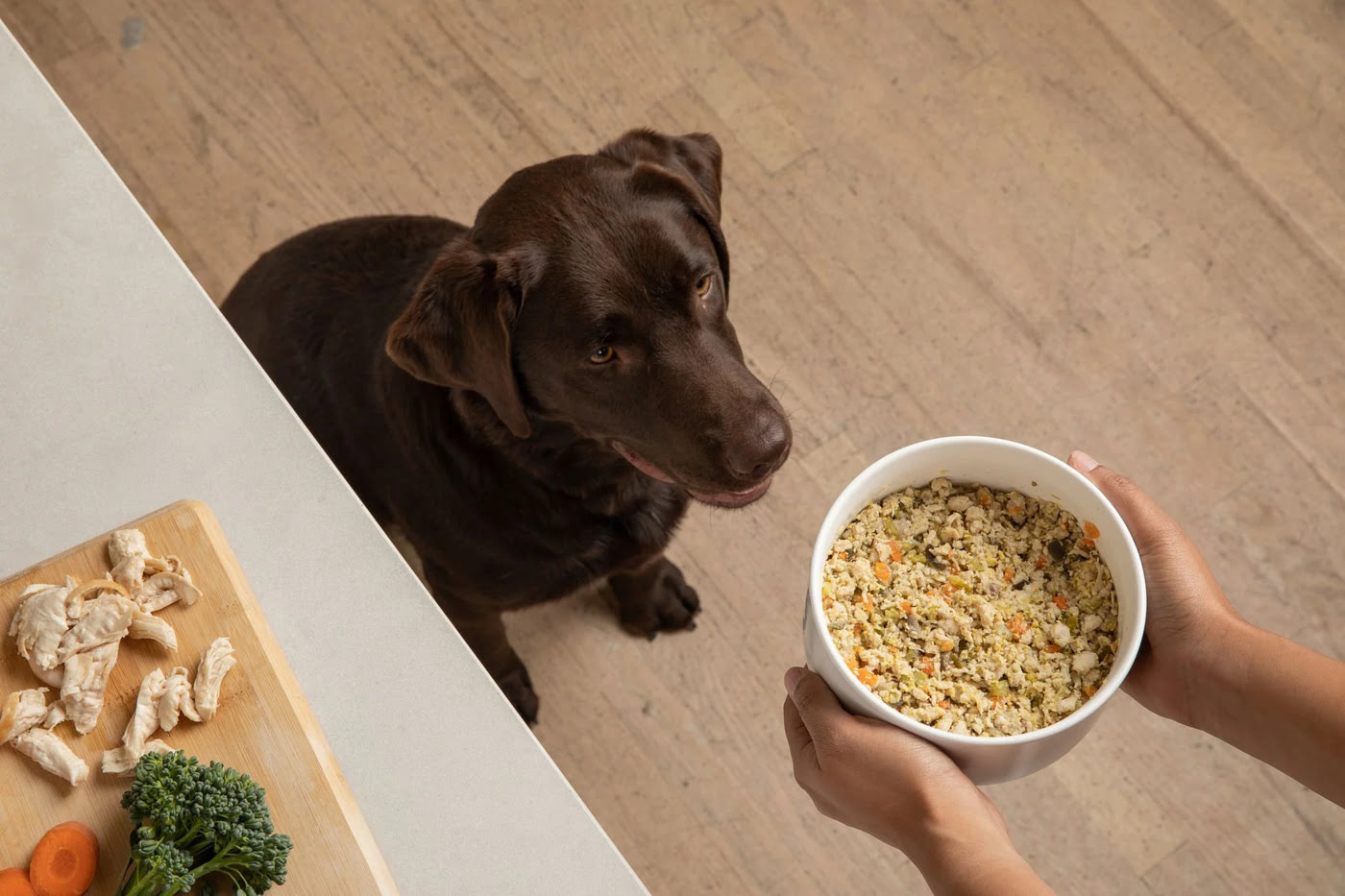Home>Health & Wellness>Common Health Issues>What Do I Feed A Dog With Diabetes?


Common Health Issues
What Do I Feed A Dog With Diabetes?
Published: January 30, 2024
Learn about common health issues in dogs, including diabetes, and discover the best diet to manage your diabetic dog's condition. Expert advice on feeding a dog with diabetes.
(Many of the links in this article redirect to a specific reviewed product. Your purchase of these products through affiliate links helps to generate commission for Pawsomeoldies.com, at no extra cost. Learn more)
Table of Contents
Introduction
When a beloved furry friend is diagnosed with diabetes, it can be a concerning and overwhelming experience for pet owners. Just like humans, dogs can develop diabetes, and managing this condition requires careful attention to various aspects of their health, including their diet. Proper nutrition plays a crucial role in managing diabetes in dogs, and understanding how to tailor their diet can significantly impact their well-being and quality of life.
In this comprehensive guide, we will delve into the dietary considerations for dogs with diabetes, including the recommended foods, foods to avoid, feeding schedule, and monitoring their diet. By gaining a deeper understanding of how to support a dog with diabetes through their diet, pet owners can feel empowered to make informed decisions that promote their furry companion's health and happiness.
Understanding the nuances of diabetes in dogs and the role of nutrition in managing this condition is essential for providing the best possible care for our four-legged friends. Let's embark on this enlightening journey to discover the optimal diet for dogs with diabetes, ensuring that they can thrive and continue to bring joy to their families for years to come.
Read more: What Can I Do For A Diabetic Dog
Understanding Diabetes in Dogs
Diabetes mellitus, commonly referred to as diabetes, is a complex and chronic condition that can affect dogs, just as it does humans. In dogs, diabetes typically falls into two categories: Type 1 diabetes, which occurs when the pancreas fails to produce enough insulin, and Type 2 diabetes, which involves insulin resistance. Both types result in elevated blood sugar levels, leading to a range of symptoms and potential complications.
One of the primary roles of insulin in the body is to regulate blood sugar levels. When a dog has diabetes, this regulatory process is disrupted, causing glucose to accumulate in the bloodstream instead of being utilized by the body's cells for energy. As a result, dogs with diabetes may experience symptoms such as increased thirst and urination, weight loss, lethargy, and in severe cases, even vision problems.
Understanding the risk factors for diabetes in dogs is crucial for early detection and management. Certain breeds, including Poodles, Dachshunds, and Beagles, are predisposed to developing diabetes. Additionally, obesity, genetic predisposition, and certain medical conditions can increase the likelihood of diabetes in dogs.
Diagnosing diabetes in dogs involves thorough veterinary assessment, including blood tests to measure glucose levels and potentially other diagnostic tests to evaluate overall health. Once diagnosed, it's essential for pet owners to work closely with their veterinarian to develop a comprehensive management plan, which often includes dietary adjustments, insulin therapy, and regular monitoring.
By gaining a deeper understanding of diabetes in dogs, pet owners can recognize the importance of proactive management and the crucial role of nutrition in supporting their furry companion's health. With this knowledge, they can navigate the complexities of diabetes with confidence, ensuring that their beloved pet receives the care and attention they need to lead a fulfilling and comfortable life.
Dietary Considerations for Dogs with Diabetes
Dietary considerations play a pivotal role in managing diabetes in dogs. A carefully tailored diet can help regulate blood sugar levels, maintain a healthy weight, and support overall well-being. When crafting a diet plan for a dog with diabetes, several key factors should be taken into account to ensure optimal nutrition and effective management of the condition.
First and foremost, the composition of the dog's diet is of utmost importance. A diet for a diabetic dog should prioritize high-quality, easily digestible proteins, such as lean meats and fish. These protein sources provide essential nutrients while minimizing the impact on blood sugar levels. Additionally, incorporating complex carbohydrates with a low glycemic index, such as sweet potatoes and legumes, can help regulate glucose absorption, preventing rapid spikes in blood sugar.
Furthermore, dietary fat should be carefully moderated to prevent excessive calorie intake, which can contribute to weight gain. Healthy fats, such as those found in fish oil and flaxseed, can support skin and coat health without compromising the dog's metabolic stability. It's essential to strike a balance between protein, carbohydrates, and fats to create a well-rounded and diabetes-friendly diet for dogs.
In addition to macronutrient composition, the timing and frequency of meals are crucial considerations for dogs with diabetes. Establishing a consistent feeding schedule helps regulate insulin administration and ensures that blood sugar levels remain stable throughout the day. Dividing the daily food intake into multiple small meals can prevent drastic fluctuations in glucose levels and support better insulin utilization.
Moreover, the concept of glycemic control extends beyond the food itself. Treats and snacks should also align with the dog's dietary requirements, offering low-carbohydrate, high-protein options that complement their main meals. By maintaining consistency in both the main diet and supplementary treats, pet owners can effectively manage their diabetic dog's nutritional intake.
Overall, the dietary considerations for dogs with diabetes revolve around creating a balanced, nutrient-dense, and low-glycemic diet that supports stable blood sugar levels and overall health. By prioritizing high-quality ingredients, portion control, and meal timing, pet owners can play a proactive role in managing their diabetic dog's condition through thoughtful and tailored nutrition.
Recommended Foods for Dogs with Diabetes
When it comes to selecting the most suitable foods for dogs with diabetes, prioritizing nutrient-dense, low-glycemic options is paramount. These foods not only help regulate blood sugar levels but also contribute to the overall well-being of diabetic dogs. Here are some recommended foods that can form the foundation of a diabetes-friendly diet for dogs:
Lean Proteins
Incorporating lean proteins into a diabetic dog's diet is essential for supporting muscle health and providing essential amino acids. Opt for high-quality sources of protein, such as skinless chicken, turkey, lean cuts of beef, and fish. These protein sources offer a balanced nutritional profile while minimizing the impact on blood sugar levels, making them ideal for diabetic dogs.
Read more: How Do I Start Feeding My Dog A Raw Diet
Complex Carbohydrates
Selecting complex carbohydrates with a low glycemic index is crucial for managing diabetes in dogs. Foods such as sweet potatoes, lentils, and quinoa provide sustained energy and help regulate glucose absorption, preventing rapid spikes in blood sugar. These nutrient-rich carbohydrates offer a valuable source of fiber and essential nutrients without causing significant fluctuations in blood glucose levels.
Non-Starchy Vegetables
Incorporating non-starchy vegetables, such as broccoli, spinach, and green beans, into a diabetic dog's diet can contribute to overall nutritional balance. These vegetables are low in carbohydrates and calories while offering essential vitamins, minerals, and antioxidants. Their fiber content also supports digestive health and helps maintain steady blood sugar levels.
Healthy Fats
Including healthy fats in the form of omega-3 fatty acids, such as those found in fish oil and flaxseed, can benefit diabetic dogs by supporting skin and coat health. These fats offer essential nutrients without significantly impacting blood sugar levels, making them a valuable addition to a diabetes-friendly diet.
Balanced Commercial Diabetic Dog Food
Opting for commercially available diabetic dog food specifically formulated to meet the nutritional needs of diabetic dogs can provide a convenient and well-balanced option. These specialized diets are designed to support stable blood sugar levels and overall health, often incorporating a combination of lean proteins, complex carbohydrates, and essential nutrients tailored to the specific needs of diabetic dogs.
By prioritizing these recommended foods, pet owners can create a well-rounded and diabetes-friendly diet for their furry companions, supporting stable blood sugar levels, overall health, and a fulfilling quality of life.
Foods to Avoid for Dogs with Diabetes
When crafting a diet plan for dogs with diabetes, it's equally important to be mindful of the foods that may negatively impact their blood sugar levels and overall health. Certain foods can lead to rapid spikes in glucose levels or pose challenges for insulin regulation, making them unsuitable for diabetic dogs. By understanding the foods to avoid, pet owners can proactively safeguard their furry companions' well-being and support effective diabetes management.
High-Glycemic Carbohydrates
Foods containing high-glycemic carbohydrates, such as white rice, bread, and regular pasta, should be avoided in diabetic dogs' diets. These carbohydrates are rapidly digested and can cause sharp increases in blood sugar levels, posing challenges for insulin regulation. Opting for complex carbohydrates with a lower glycemic index ensures a more gradual and controlled release of glucose into the bloodstream.
Sugary Treats and Snacks
Treats and snacks high in sugar content, including commercial dog treats with added sugars, should be avoided for diabetic dogs. These sugary indulgences can lead to significant spikes in blood sugar levels, disrupting the delicate balance that diabetic dogs require. Instead, pet owners can opt for low-carbohydrate, high-protein treats that align with their dog's dietary needs and support stable blood sugar levels.
Fatty and Processed Meats
Fatty and processed meats, such as sausage and bacon, should be limited or avoided in diabetic dogs' diets. These meats often contain high levels of saturated fats and additives, which can contribute to weight gain and metabolic challenges. Prioritizing lean cuts of meat and high-quality protein sources ensures that diabetic dogs receive essential nutrients without compromising their metabolic stability.
High-Sugar Fruits
While fruits can offer valuable nutrients, certain high-sugar fruits, such as bananas and mangoes, should be moderated in diabetic dogs' diets. These fruits contain significant natural sugars that can impact blood glucose levels. Instead, pet owners can opt for low-sugar fruits, such as berries and apples, as occasional treats in controlled portions.
Processed and High-Fat Foods
Processed foods high in unhealthy fats, such as fried items and commercially prepared snacks, should be avoided for diabetic dogs. These foods can contribute to weight gain and metabolic imbalances, posing challenges for diabetes management. Prioritizing whole, minimally processed foods supports stable blood sugar levels and overall health.
By being mindful of these foods to avoid, pet owners can take proactive steps to create a diabetes-friendly diet for their furry companions. This thoughtful approach to nutrition empowers pet owners to support their diabetic dogs' well-being and ensure that they thrive despite the challenges of managing diabetes.
Feeding Schedule for Dogs with Diabetes
Establishing a consistent and structured feeding schedule is paramount for effectively managing diabetes in dogs. A well-planned feeding routine not only supports the regulation of blood sugar levels but also facilitates the administration of insulin, if required. By adhering to a carefully crafted feeding schedule, pet owners can help their diabetic dogs maintain stable glucose levels and overall metabolic balance.
For dogs with diabetes, a typical feeding schedule often involves dividing their daily food intake into two or more meals, spaced throughout the day. This approach helps prevent drastic fluctuations in blood sugar levels and supports better insulin utilization. By offering smaller, more frequent meals, the dog's body can more effectively process and utilize the nutrients from their food, promoting metabolic stability.
The timing of meals is also a crucial aspect of the feeding schedule for diabetic dogs. Consistency is key, and pet owners should aim to feed their furry companions at the same times each day. This regularity not only helps regulate insulin administration, if applicable, but also supports the dog's natural metabolic rhythm. By aligning meal times with the dog's daily routine, such as morning and evening meals, pet owners can establish a predictable and reliable feeding schedule.
In addition to meal timing, the coordination of meals with insulin administration, if prescribed by a veterinarian, is essential. For dogs receiving insulin therapy, feeding should ideally occur shortly before or after insulin injections to synchronize the peak insulin activity with the digestion and absorption of food. This synchronization helps prevent hypoglycemia (low blood sugar) and ensures that the dog's energy needs are adequately met throughout the day.
Furthermore, monitoring the dog's response to meals within the established feeding schedule is crucial for fine-tuning their dietary management. Observing post-meal behaviors, such as energy levels, thirst, and appetite, can provide valuable insights into the dog's metabolic response to different meal timings and compositions. This observational approach empowers pet owners to make informed adjustments to the feeding schedule, ensuring that it optimally supports their diabetic dog's well-being.
By adhering to a structured feeding schedule tailored to the specific needs of diabetic dogs, pet owners can play a proactive role in managing their furry companions' diabetes. This thoughtful approach to meal planning and timing supports stable blood sugar levels, effective insulin utilization, and overall metabolic balance, empowering diabetic dogs to lead healthy and fulfilling lives.
Monitoring and Adjusting Your Dog's Diet
Monitoring and adjusting a diabetic dog's diet is an ongoing and dynamic process that requires attentiveness, observation, and proactive management. As with any aspect of diabetes care, the dietary plan for a diabetic dog may need to be adjusted based on their response to food, changes in insulin requirements, and overall health status. By closely monitoring their dog's dietary intake and metabolic response, pet owners can make informed adjustments to optimize their furry companion's well-being.
Regular monitoring of a diabetic dog's diet involves observing their food consumption, energy levels, and overall behavior before and after meals. By noting any changes in appetite, thirst, or activity levels, pet owners can gain valuable insights into how their dog's body responds to different foods and feeding schedules. Additionally, tracking the dog's water intake and urine output can provide indicators of their metabolic stability and hydration status.
In conjunction with monitoring their dog's behavior and physical cues, pet owners should also maintain a detailed log of their dog's blood glucose levels, if applicable. For dogs receiving insulin therapy, regular blood glucose monitoring is essential for assessing the effectiveness of their dietary management and insulin regimen. By tracking blood glucose levels before and after meals, pet owners can identify patterns and trends that inform adjustments to the dog's diet and insulin dosing.
Adjusting a diabetic dog's diet may involve modifying the composition of their meals, refining the feeding schedule, or making changes to portion sizes based on their individual response. For example, if a diabetic dog experiences frequent fluctuations in blood sugar levels after meals, adjusting the timing and composition of their meals may help achieve more stable glucose control. Similarly, if the dog's energy levels or weight fluctuate, modifying their portion sizes or nutrient ratios can support their overall metabolic balance.
Collaboration with a veterinarian is crucial when monitoring and adjusting a diabetic dog's diet. Regular check-ups and consultations with a veterinary professional allow for comprehensive assessments of the dog's health status, including weight management, organ function, and insulin requirements. By working closely with a veterinarian, pet owners can receive tailored guidance on optimizing their dog's dietary plan and ensuring that it aligns with their specific health needs.
In essence, monitoring and adjusting a diabetic dog's diet is a dynamic and personalized process that requires careful observation, data tracking, and collaboration with veterinary professionals. By staying attuned to their dog's metabolic response and seeking guidance from experts, pet owners can proactively manage their diabetic dog's dietary needs, promoting stable blood sugar levels, overall health, and a vibrant quality of life.
Conclusion
In conclusion, navigating the complexities of managing diabetes in dogs through tailored nutrition is a journey that demands dedication, understanding, and a proactive approach. By delving into the dietary considerations, recommended foods, feeding schedule, and monitoring and adjustment strategies for diabetic dogs, pet owners can empower themselves to provide the best possible care for their furry companions.
Understanding the nuances of diabetes in dogs, including the impact of insulin regulation, blood sugar management, and the role of nutrition, is essential for pet owners embarking on this journey. By recognizing the signs and risk factors associated with diabetes in dogs, they can proactively seek veterinary assessment and develop a comprehensive management plan that encompasses dietary adjustments, insulin therapy, and ongoing monitoring.
Crafting a diabetes-friendly diet for dogs involves prioritizing high-quality, nutrient-dense ingredients, including lean proteins, complex carbohydrates, and healthy fats. By selecting foods with a low glycemic index and aligning them with a structured feeding schedule, pet owners can support stable blood sugar levels and overall metabolic balance in their diabetic dogs.
Moreover, the process of monitoring and adjusting a diabetic dog's diet is a dynamic and personalized endeavor that requires attentiveness, observation, and collaboration with veterinary professionals. By staying attuned to their dog's metabolic response, tracking blood glucose levels, and seeking expert guidance, pet owners can make informed adjustments to optimize their dog's dietary plan and ensure that it aligns with their specific health needs.
Ultimately, the journey of managing diabetes in dogs through nutrition is a testament to the unwavering bond between pet owners and their beloved companions. By embracing the role of nutrition in supporting their diabetic dogs' well-being, pet owners can navigate the challenges of diabetes with compassion, resilience, and a commitment to providing the best possible care.
As pet owners embark on this enlightening journey, armed with knowledge, empathy, and a proactive mindset, they can empower their diabetic dogs to lead vibrant, fulfilling lives despite the complexities of managing diabetes. With a foundation of understanding, dedication, and informed decision-making, pet owners can champion their furry companions' health and happiness, ensuring that they continue to bring joy to their families for years to come.











